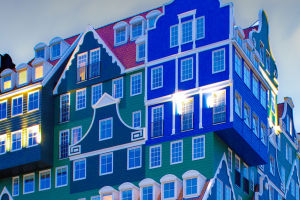Looking around the world, what are the successful methods of developing villages in developed countries and leading regions around the world? How does rural revitalization work exactly?
The experience of dealing with cultural elements in foreign village planning is that various cultures in the world do not exist in a uniform stage of development, but they are self-regulated with their own meanings and interrelated in the world space.
Maintaining and preserving the character of the village mainly refers to its traditional styles. Foreign countries attach great importance to the maintenance of these traditional styles and their integration into the development environment of the village as a whole.
For example, in the Spring 2007 Village Plan for Springville, USA, emphasis was placed on optimizing the village structure, preserving historic buildings, and keeping the village in its original character. The village of Smale has prevented the construction of development in neighboring areas. The State of Iowa's May 2008 Village Plan suggests that emerging residential development must be consistent with the existing village atmosphere.
The most distinctive part of Germany is its rural areas; South, North, West, and East Germany are each different and not only aesthetically pleasing but also have their own very unique historical and cultural atmospheres.
German villages regard the preservation of the original form of the village, the limited renovation, and renewal of old buildings, and the protection of the ecological environment of the village as the main tasks of village renewal.
In the new planning, attention is paid to the preservation and improvement of the historical lineage of the village and the old buildings, and the relationship between tradition and modernity, inheritance and innovation is handled well. In Bavaria, for example, the Bavarian state government has been formulating an "overall development plan for villages and towns" since the 1950s.
This plan is used to control the renewal of villages and towns, including adjusting the distribution of plots, improving infrastructure, restructuring industries, preserving traditional civilization, renovating traditional houses, and preserving and repairing old villages.
One of the noteworthy aspects of the new village movement in Korea is the emergence of a "mentor" who is selected from among the villagers and is familiar with the area.
After professional training, he can combine the local reality and national policies, introduce information technology and new ideas into the new village, and lead the villagers to develop special industries according to the local conditions.
At the same time, Japan also has a similar practice in the village building movement, which is to organize local college students and young people to identify the situation of the village and then propose problems to the government to solve the lack of development of the village.
In the process of building new villages, Japan pays particular attention to how to combine the beautiful natural environment and traditional culture of the countryside with modern facilities.
In the process of construction, the principle of preserving the characteristics and modern style, the harmony between people and nature is pursued, and the regional characteristics and rural features are highlighted to avoid the phenomenon of "one village in a thousand".
In Japan's purely rural areas, there are neither rows of "villa-style" buildings nor wide roads and squares.
However, there are all the facilities related to rural production and living and collective activities, and farmers have gradually become richer, modernized their lives, mechanized their production, beautified the village environment, and made daily communication with neighbors.


